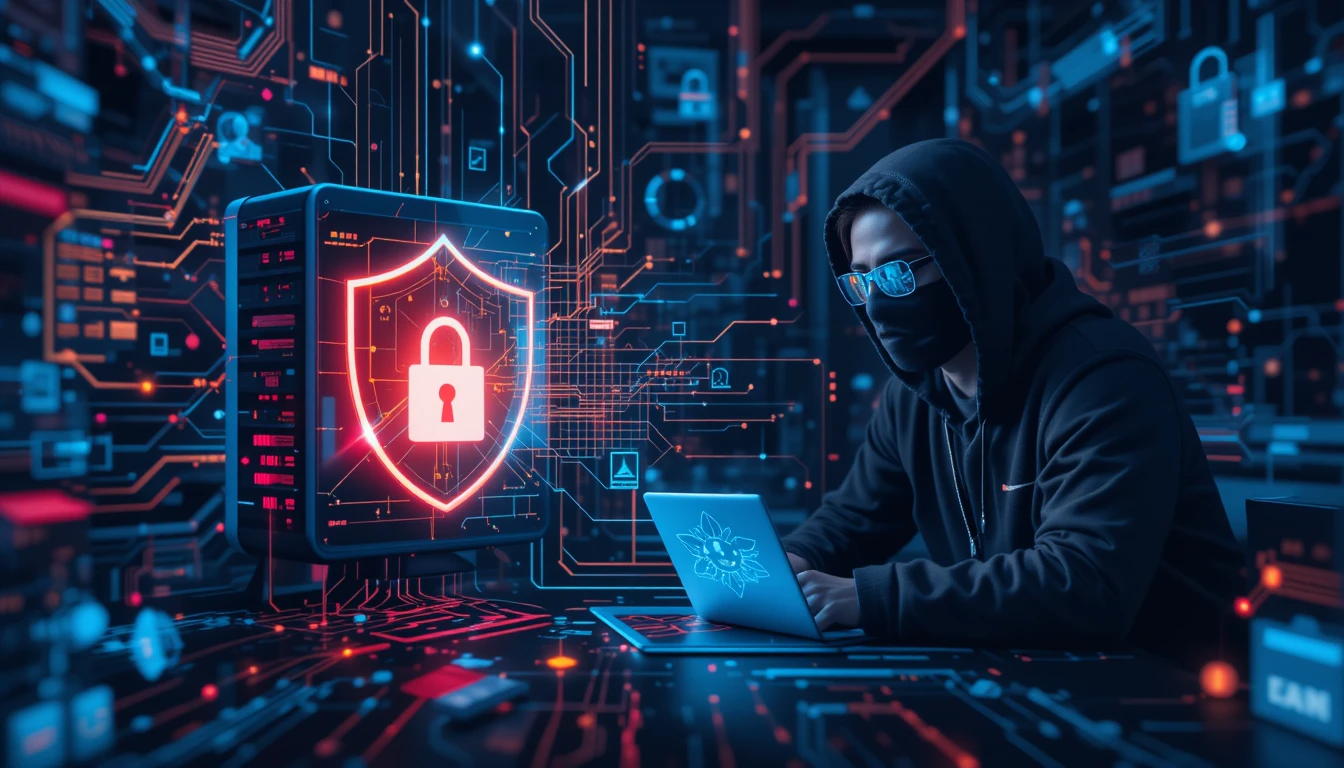In the digital age, cybersecurity is becoming critical for businesses. Michael Holopov, CEO of ATLEX, shares tips on data protection and countering cyberattacks in an interview with Anna Nikulina. He talks about modern threats and precautions to take to protect your company.

Anna Nikulina: Michael, today even small companies face cyberattacks. What threats would you say are the most critical in 2025?
Michael Holopov: First, targeted phishing attacks - attackers have started using generative AI to create emails that are almost impossible to distinguish from real ones. Second, the growth of ransomware attacks on infrastructure: instead of encrypting data, attackers threaten to publish it. And the third trend is supply chain attacks, when a vulnerability in a partner's software jeopardizes the entire ecosystem.
How have cyber threats evolved in recent years? Are there new types of attacks that are important for businesses to be aware of?
Earlier attacks were “point attacks,” but now they are complex campaigns. For example, a combination of DDoS and malicious code injection. Attacks on IoT devices have appeared, from smart cameras to industrial sensors. Businesses should pay attention to the risks associated with cloud services: incorrect access rights settings often become a loophole for hackers.
What basic defenses would you recommend to companies, even those without a large IT budget?
Mandatory minimums:
- Regular software updates and data backups.
- Implement two-factor authentication for all employees.
- Team training: most successful attacks start with human error.
And don't forget about security audits — even free tools like vulnerability scanners can reveal weaknesses.
What role does system administration play in threat prevention?
Proper administration is proactive defense. For example, network segmentation so that a single server hack does not paralyze the entire infrastructure. Or setting up monitoring of abnormal activity. It is important not just to react to incidents, but to predict risks — for example, analyze logs to identify suspicious patterns.
Many companies still neglect data encryption. How critical is this?
Encryption is not only protection against leaks, but also compliance with regulatory requirements such as 152-FZ or GDPR. Even if an attacker gains access to the data, it is useless without the key. This is especially important for companies dealing with personal data or trade secrets.
DDoS attacks are becoming more and more widespread. How can businesses prepare for them?
The main thing is to have a plan to quickly switch to backup capacity. However, it is important not to overestimate your resources: sometimes it is easier to agree with your ISP on DDoS protection than to try to cope on your own. You can additionally use CDN-services that distribute traffic and absorb part of the load. You can also set up IP address blacklists and geofiltering.
What should an effective incident response include?
The effectiveness in this case may depend on many things, but in general you can proceed according to the following algorithm:
- Isolation of contaminated systems to contain the damage.
- Analyzing the attack vector — how and through what penetrated.
- Restore data from backups.
- Post-analysis: how to avoid repetition.
It is ideal if a company has a dedicated CERT (Computer Emergency Response Team), but for small businesses, a contract with outside specialists is sufficient.
How do legislative changes, such as those on digital sovereignty, affect approaches to security?
Local data storage, as required by law, reduces the risks of cross-border leaks. But new challenges are emerging: the need for certified equipment and restrictions on the use of foreign software. Companies have to revise their IT infrastructure architecture to meet the requirements.
Is Artificial Intelligence a threat or a defense tool?
Both. On the one hand, neural networks make it possible to automate monitoring and detect anomalies faster than a human. On the other hand, attackers are using AI to generate phishing and pick passwords. The key trend is AI vs. AI: defense systems are learning to predict the actions of hacker algorithms.
How important is the role of employees in safety? And how do you motivate your team to comply with the rules?
It's the foundation! You can buy an expensive firewall, but if an employee sends a password in a messenger, the defense will collapse. Regular trainings and simulation games are important — for example, test phishing emails. Simplifying processes is also important: complex rules eventually start to be ignored, so you need a balance between security and convenience.
What risks does the growth of IoT devices bring?
Smart devices are often the “weak link”: default passwords, lack of encryption, outdated software. Imagine that a hacker gets into the internal network through a camera in the office. The solution is a separate network for IoT, regular firmware updates and avoiding devices with non-transparent security policies.
How do you think cyber threats will evolve in the next 2-3 years?
The number of attacks on critical infrastructure — energy, transportation — will increase. There will be threats related to quantum computing, which can break modern encryption algorithms. And, of course, risks around meta-universes — protecting virtual assets and user identities will become a new headache.
What advice would you give to a business that is just starting to build a security system?
Start with auditing and prioritization: protect the most important things. Don't try to cover all risks at once — it's unrealistic. Use a “managed risk” model: determine which threats are acceptable and which ones you need to focus resources on. And remember: security is a process, not a product. It needs to be constantly adapted.
Thanks Michael, I think these tips will help our readers better understand how to protect their business in the digital age.
Thank you for your questions. The main thing is not to underestimate the risks and to be proactive.

Comments